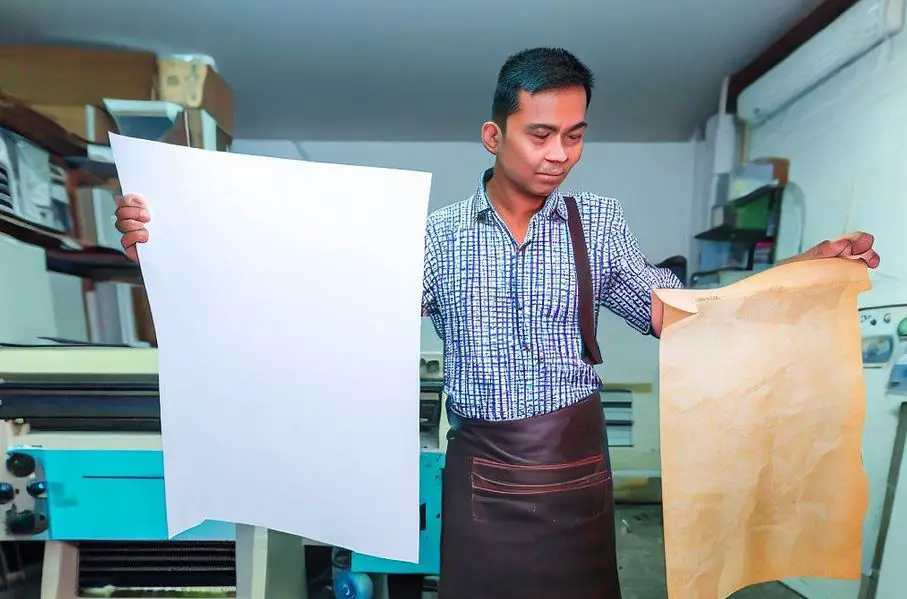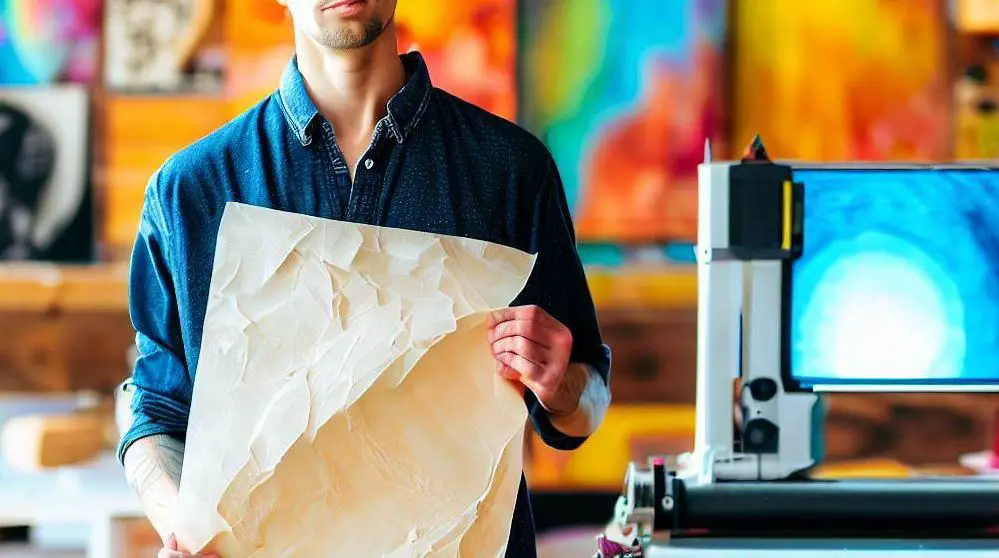So, are you looking for a suitable solution for printing or etching your designs? The list of possible surfaces you might have considered is probably immense.
This article focuses on an all too important debate you might have considered in the past – the butcher paper vs parchment paper for sublimation.
If you are still new to using these surfaces for printing your designs, this guide offers all you would need to know.
Butcher Paper vs Parchment Paper
Butcher paper is thicker and more durable under pressure than parchment paper, which makes it great for heavy materials or fabrics that have been heavily saturated.
Nevertheless, it is crucial to utilize uncoated butcher paper to effectively absorb and release moisture from your designs, rather than applying it directly to your underlying surface.
On the other hand, parchment paper is coated with a silicone layer that allows the image to transfer without difficulty.
Also Read: Can You Sublimate on Silicone?
This makes it a better choice for HTV crafts and layering HTV than butcher paper. However, it is coated and holds in moisture, which can cause ink to bleed.

Let’s take a look at other differences and similarities:
Differences
When it comes to sublimation, parchment paper vs butcher paper have distinct differences:
Heat Resistance
Parchment paper is generally more heat resistant than butcher paper.
Sublimation requires high temperatures (around 380-400°F or 193-204°C), and parchment paper can withstand these temperatures without melting or releasing harmful chemicals.
Butcher paper, on the other hand, may not be suitable for sublimation due to its lower heat resistance.
Ink Transfer
Parchment paper has a non-stick surface due to its silicone coating, which helps prevent the sublimation inks from sticking to the paper during the heat transfer process.
This allows for better ink transfer to the substrate.
Butcher paper does not have this non-stick property, and there is a higher chance of the ink adhering to the paper rather than transferring onto the desired surface.
Image Clarity
Due to the non-stick properties of parchment paper, it can help produce clearer and crisper sublimation prints.
The ink is less likely to smear or distort during the transfer process. Butcher paper, lacking the non-stick coating, may result in less precise or slightly blurred images.
Similarities
Here are the main similarities between butcher paper and parchment paper:

Both Papers Are Easy To Use As Transfer Mediums
Butcher and parchment paper are both reasonable transfer mediums when working on sublimation printing.
Also Read: Can You Sublimate on Cardstock?
It allows users to print designs on paper using sublimation ink, and transfer them to substrates using pressure and heat.
Both Are Heat Resistant.
Both papers offer heat resistance and can accommodate the intense temperatures involved in sublimation printing.
It’s a property that makes them perfect for sublimation printing procedures.
Both Are Disposable.
Both of these papers are disposable after use, and are easy to remove even after the transfer process completes.
Both Papers Work Well With Different Substrates
Both papers are usable with different substrates including ceramics, metal, and other fabrics.
It makes them dynamic options that are perfect for sublimation printing.
What is Butcher Paper?
Butcher paper is a type of paper made for applications like packaging, and wrapping.
Most brands make it using resources like bleached and kraft paper, which doesn’t often have any coating. Plus, it also has a low level of ink absorbency.
Butcher paper also serves various purposes including wrapping meat, and various other food items. It is also usable as a lining material for settings like butchers, and food stores.
People also like using it for applications like wrapping sandwiches. One of the qualities of butcher paper is that it’s durable, and can withstand exposure to moisture or bacteria.
Plus, it’s also good at resisting elements like dust or dirt.
Butcher paper is also popular in the printing industry.
The paper is also porous and has a unique texture making it perfect for printing applications. Sublimation involves transferring an ink-based image to a surface using a heat press.
You can sublimate on butcher paper because it’s durable, compact, and offers an excellent surface for transferring images.
What is Parchment Paper?
Parchment paper is a paper type that undergoes silicone treatment procedures. This helps to give in non-stick and heat-resistant properties.
Also Read: Can You Sublimate on Modal Fabric?
People usually use it for various applications including cooking, baking, and food preparation. It is also applicable for baking sheets, where it prevents issues like browning and sticking.
The paper is made using products like the skin of animals like calves or sheep. It also undergoes a heat treatment process using acid-free procedures.
These procedures help make the papers smooth and non-porous. Plus, many brands also make their parchment papers using a silicone coating, so that it offers heat-resistant and non-stick properties.
Parchment paper can also withstand high temperatures of up to 450 degrees Fahrenheit.
Parchment paper also exists in various sizes, surface textures, and density levels. The most common categories of parchment paper are the bleached and unbleached types.
The bleached ones are common among people who like to do baking. Unbleached parchment paper is brown, and suitable for applications like roasting.
Parchment paper is an excellent resource for sublimation procedures. That is because it prevents issues like ink transfer to other surfaces, and also makes it easy to produce high-quality images.
Plus, it’s also usable for protecting heat presses from issues like dust and ink accumulation. Parchment paper has also been popular among people who want to reduce the amount of time required to complete printing tasks.
Bottom Line
In summary, when it comes to sublimation, parchment paper is generally preferred over butcher paper. Parchment paper’s heat resistance and non-stick properties make it more suitable for achieving accurate ink transfer and clear, vibrant sublimation prints.
FAQs
Is Butcher Paper Good for Sublimation?
Butcher paper is a good choice for sublimation projects because it is thicker, more durable, and absorbs moisture.
It is important to use uncoated butcher paper to prevent ink from bleeding onto your heat press
Can I Use Parchment Paper Instead of Butcher Paper?
Parchment paper is not recommended for sublimation printing. Parchment paper is coated with a silicone layer, which can interfere with the sublimation process and prevent proper ink transfer.
It may result in blurry or distorted prints and potentially damage the sublimation equipment.
It is best to use sublimation-specific transfer paper, which is specifically designed for the sublimation process, to achieve the best results in sublimation printing.

